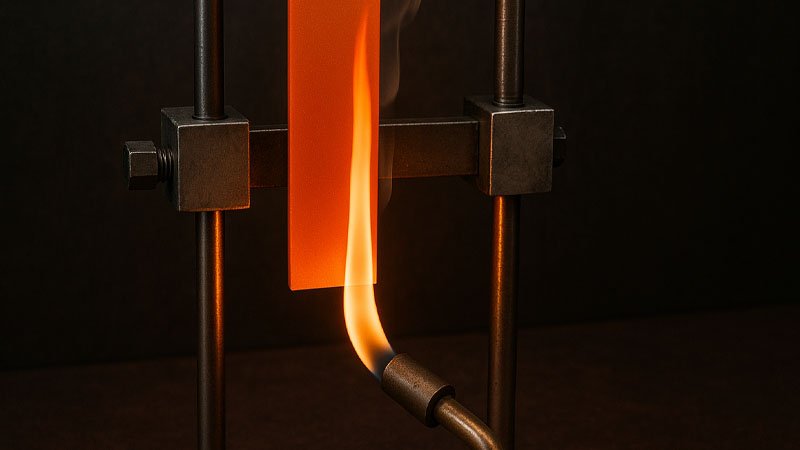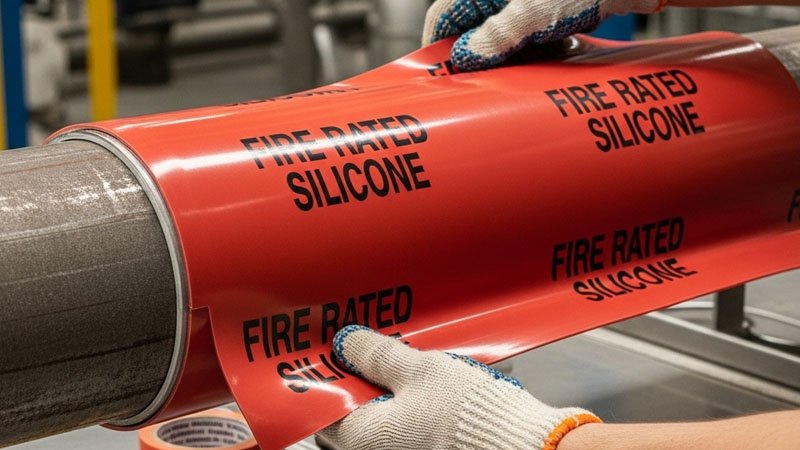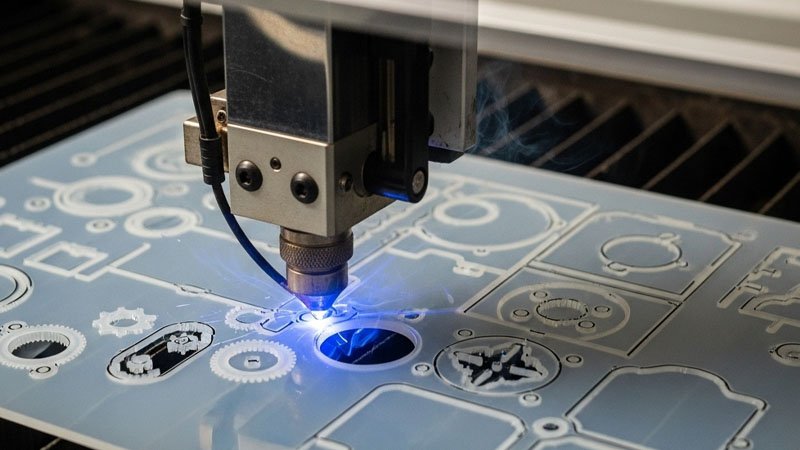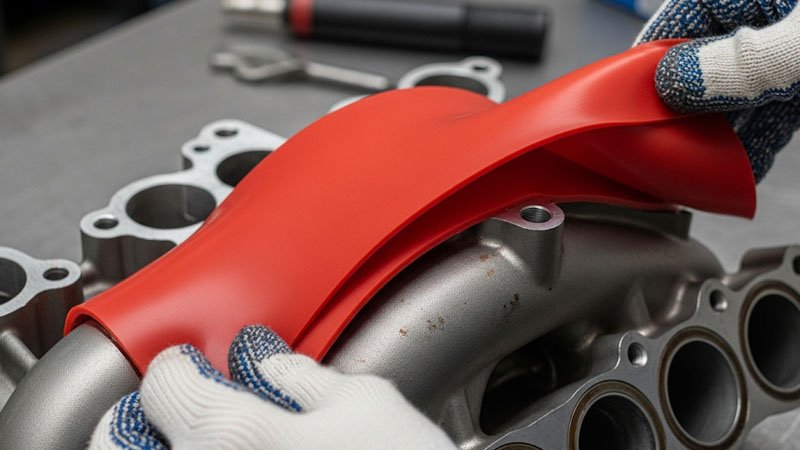If your silicone components can’t handle fire, you’re putting your entire system at risk.
Fire-resistant silicone sheets are specially formulated to resist ignition, reduce flame spread, and maintain integrity under extreme heat—making them ideal for critical safety applications.
I once worked on an HVAC project where a gasket near the heating coil melted during a system test. That incident pushed me to explore fire-resistant silicone sheets. Since then, I never use standard silicone where heat and flame risk are present.
If your silicone components can’t handle fire, you’re putting your entire eyetem at risk.
What Are Fire-Resistant Silicone Sheets?
Not all silicone is created equal—especially when fire safety is on the line.
Fire-resistant silicone sheets are made from silicone compounds that include flame-retardant additives, enabling them to meet safety standards like UL 94 V-0 and FAR 25.853.
These sheets are designed to:
- Resist ignition
- Self-extinguish when the flame is removed
- Produce low smoke and non-toxic gases
- Maintain flexibility and strength at high temperatures
Unlike standard silicone, fire-resistant versions go through strict testing for burn rate, drip behavior, and smoke toxicity. They’re widely used in aerospace, transportation, construction, medical devices, and power systems.
I once sourced UL 94 V-0 rated silicone sheets for a power distribution cabinet in a school. The fire marshal approved the setup without hesitation.
How Do Fire Ratings Like UL 94 Work?
I used to just trust marketing labels—until a client asked for the actual UL certificate.
UL 94 is a standardized flammability rating system for plastics, with V-0 being the highest for vertical burn performance, meaning the material self-extinguishes quickly.

Here’s how UL 94 ratings are typically broken down:
| UL 94 Rating | Description | Flame Time (After Ignition) |
|---|---|---|
| V-0 | Self-extinguishes in <10s, no drips | ≤ 10s each, ≤ 50s total |
| V-1 | Extinguishes in <30s, slight dripping | ≤ 30s each, ≤ 250s total |
| V-2 | Extinguishes but with flaming drips | ≤ 30s each, ≤ 250s total |
Some industries also require FAR 25.853 (for aviation), EN 45545 (for railway), or NFPA 701 (for building fabrics).
For my aerospace client, we used a FAR-rated silicone to seal access panels. It met flammability, smoke, and toxicity (FST) standards required for cabin use.
What Applications Require Fire-Resistant Silicone?
When safety is on the line, fire-resistant silicone is not optional—it’s essential.
Fire-resistant silicone sheets are commonly used in aerospace, HVAC, public transportation, construction, and industrial electronics to ensure compliance and prevent fire hazards.

Some real-world uses I’ve worked on:
- HVAC systems: Gaskets near heat exchangers or burners
- Elevators: Insulation panels and vibration pads
- Power panels: Fire-rated seals between metal cabinets
- Aircraft interiors: Non-drip barrier sheets
- Railway doors: Flexible, smoke-tested door seals
Here’s a quick reference table:
| Industry | Use Case | Required Rating |
|---|---|---|
| Aerospace | Cabin seals, duct linings | FAR 25.853 |
| Electronics | Panel gaskets, battery isolation | UL 94 V-0 |
| Building Safety | Elevator interiors, access panels | NFPA 701 / UL 94 |
| Public Transit | Train door gaskets, seat pads | EN 45545 / UL 94 |
These applications can’t afford material failure. Using non-rated silicone can result in failed inspections, recalls, or even liability issues.
Can Fire-Resistant Sheets Be Customized?
One of my clients needed a flame-retardant gasket in a rare color and shape. That’s when I realized—customization is just as important as safety.
Yes, fire-resistant silicone sheets can be customized in thickness, Shore hardness, color, cut shape, and adhesive backing—while still maintaining their flame-retardant properties.

Here are customization options I often use:
- Thickness: 1mm to 10mm depending on compression needs
- Shore A Hardness: Usually 40–70 for sealing or vibration damping
- Color: Red oxide is most common, but others are available (gray, black, blue)
- Cut shapes: Die-cut, kiss-cut, or CNC cut for exact fit
- Adhesive backing: Optional high-temp silicone adhesive layer
For an elevator project, we provided 3mm gray fire-rated silicone pads with 60 Shore A hardness and PSA backing. It passed both the fire test and installation efficiency test.
Always confirm with your supplier that the customized product still meets the original fire rating. Some additives or adhesives may alter test performance.
How Does Temperature Resistance Compare?
Don’t confuse flame resistance with heat resistance—they’re related but not the same.
Fire-resistant silicone maintains structural and insulating properties at high temperatures—often up to 230°C—and resists ignition when exposed to direct flame.

Here’s a breakdown:
| Property | Fire-Resistant Silicone | Standard Silicone |
|---|---|---|
| Max Operating Temp | ~230°C | ~200–230°C |
| Ignition Point | >300°C | ~250°C |
| Self-Extinguishing | Yes (V-0 rated) | No (varies) |
| Smoke Emission | Low | Moderate |
In a bus engine compartment, I used a 5mm thick fire-rated silicone sheet between the metal frame and wiring harness. It not only sealed well—it never charred, even after 1,000 hours of vibration and heat exposure.
Where Can I Source Reliable Fire-Rated Silicone Sheets?
I’ve tested dozens of suppliers. Many claim “fire-resistant” on their labels—but without certificates, you’re risking compliance and safety.
Choose a supplier that offers certified silicone materials, technical documentation, and custom-cutting services for fire-rated applications.
Here’s my checklist when sourcing fire-rated silicone:
- ✅ UL 94 V-0 or equivalent certificate
- ✅ Test reports for thickness, hardness, and burn rate
- ✅ Material Safety Data Sheet (MSDS)
- ✅ RoHS and REACH compliance (for environment-sensitive industries)
- ✅ Custom cutting and adhesive options
At RuiYang Silicone, we manufacture and supply UL 94 V-0 rated fire-resistant silicone sheets in standard and custom sizes. Our materials meet safety standards for industrial, automotive, and aerospace use. We offer cutting, lamination, and adhesive services tailored to your project needs.
Clients across HVAC, construction, and electronics industries rely on our flame-retardant products for safety-critical installations.
Conclusion
Fire-resistant silicone sheets provide essential protection in heat-prone environments—offering both safety and reliability where it matters most.